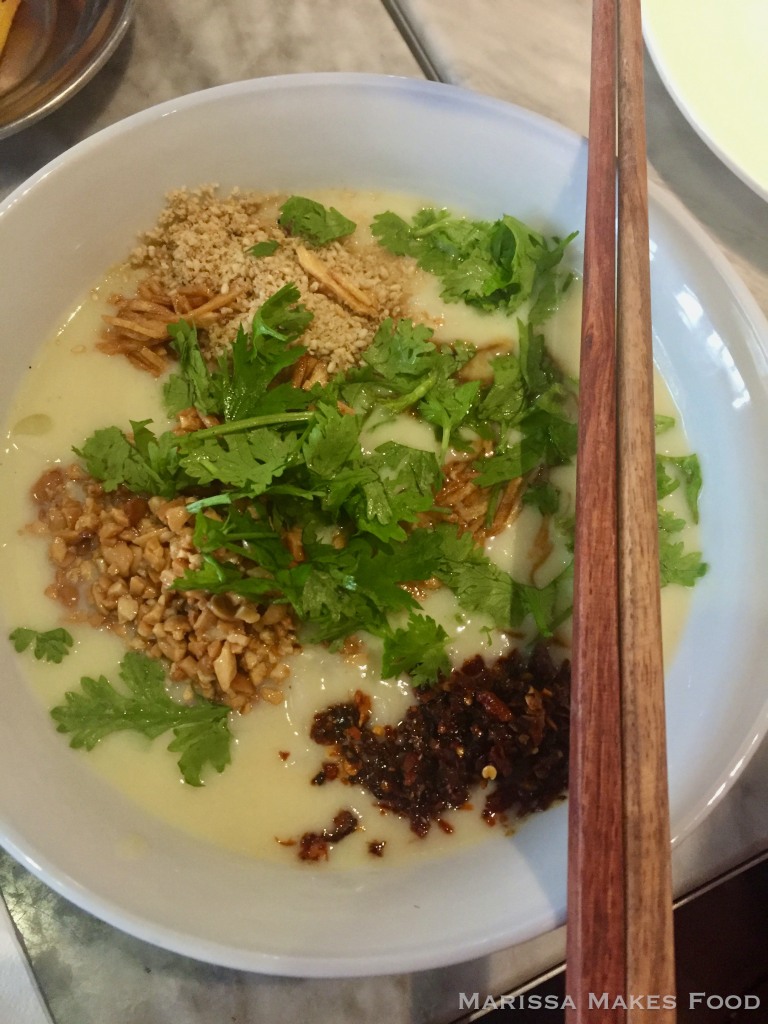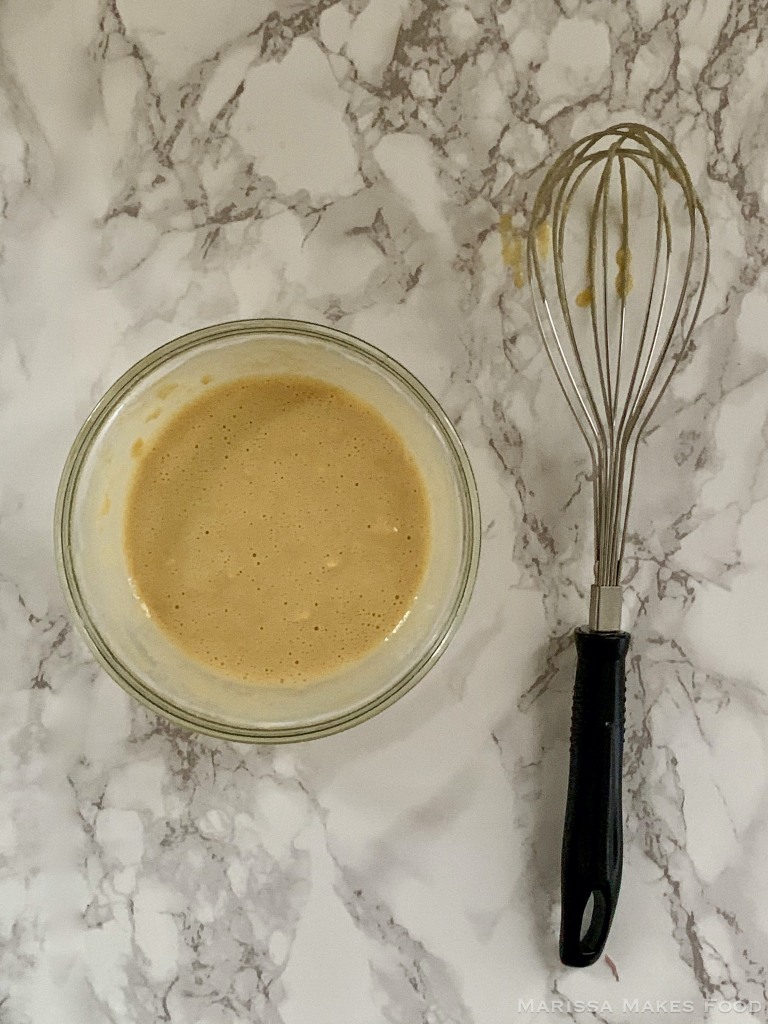
This week was gray and rainy in New York, with a bitter wind whipping through the streets. There’s no better time of year for a comforting soup. What I like most about this coconut noodle soup is that it brings Burmese food into your kitchen using only ingredients you can find at your grocery store, cooked all in one pot! Not to mention this soup is so incredible cozy to get you through those dreary days.
Burma. The word alone evokes a feeling of far away, mystery, the exotic, the unknown. The country, which shed its colonial name for Myanmar in 1989, remained isolated from the rest of the world for decades as it struggled through a lengthy civil war. But in the last decade it has opened up its borders and I visited in 2018.

All the things I loved about Myanmar are worthy of another post or several (check back next week!) But today I’m focusing in on one of my favorite restaurants of the trip: Rangoon Tea House. Also bearing the colonial name of the former capital that is today Yangon, this restaurant and tea house was such a delight. With a lengthy tea menu, contemporary Burmese food, and a retro vibe, this place is definitely worth a stop if you’re in Yangon. I ordered a noodle soup…

…dessert…

and tea, obviously.
But I’ve thought about the soup a lot. Like, all the time. So when I set my sights on learning to cook something from my trip to Myanmar, I knew exactly what I wanted to make. My friend, who had been living there for about a year at the time, said I had ordered “ohno kauk swe”, which translates to “coconut milk noodles”. I looked up a few recipes (NY Times and 196 flavors were particularly insightful), making adjustments to make it a vegetarian and easily vegan soup. The result is a warm and cozy coconut-y soup that retains the best elements of ohno kauk swe without the chicken or fish.

Life update: The next two weeks I’ll be traveling to Zambia and Uganda, so stay tuned for updates on my Instagram! I’ll also be writing about travel to Myanmar specifically next week.
This recipe uses tofu instead of chicken and relies on miso rather than fish products for its umami flavor. There are two keys to this recipe: the noodles, and the toppings. I am still a novice in the world of Asian noodles (so many types!!) so when I learned that the recipe is commonly made with egg noodles, I went to the store and searched for packages labeled “egg noodles” and found nothing. Later I learned that “egg noodles” include a variety of styles made with eggs including chow mein and lo mein. I tried the recipe first with ramen, which is ok but decidedly not an egg noodle, before settling on fresh Chinese lo mein. The lo mein are definitely superior and highlight the Chinese presence in Myanmar (though you can still get a decent meal with ramen). I also cooked the noodles right in the broth, which is probably against some sort of cooking rule, but I really liked how they absorbed the flavor this way.
Now, the toppings. This is one of the things that makes Burmese food so fun because it’s really choose-your-own-adventure. I opted for scallions, hard-boiled eggs, red pepper flakes, lime, and fried onions. I don’t think fried onions are exactly “traditional” but buying a carton of French’s (you might know them as those things you put on green bean casserole at Thanksgiving) is a lot easier than searching for wontons or fried rice noodles and achieves the same salty crunch. Cilantro is a popular topping and I imagine that pickled onions or crushed peanuts would be good too!

I like to start this recipe with all the prep first, including toppings. If you’re going to use hard-boiled eggs, it’s helpful to cook those first so that they are cool enough to peel slice by the end. So get that going along with all the chopping and marinating the tofu.
Start by frying the onions, garlic, and ginger in peanut oil, followed by spices and tofu.

Add the broth to the pan and while you are waiting for it to boil, whisk chickpea flour in water (don’t skip this step, lest you get lumps).

Add the chickpea flour mixture, coconut milk, and shallots. Add the noodles at the end and cook for the length of time specified on the package. When cooked, remove it from heat and add your miso. Top with whatever you want!
Have you tried this? What’s your favorite toppings? Let me know in the comments.

Burmese-Inspired Coconut Noodle Soup (Ohno Kauk Swe)
4 heaping bowls of soup. 20 minutes cooking + 15 minutes prep.
Ingredients
- 1/2 pound extra-firm tofu, chopped into small cubes
- 2 teaspoons soy sauce
- Pinch of salt
- 1/4 cup peanut oil
- 1/2 teaspoon turmeric
- 1 sweet onion, diced
- 5 cloves garlic, chopped
- 1 inch of ginger, peeled and grated
- 1 teaspoon sweet paprika
- 1 cup water, divided
- 5 cups vegetable broth
- 1/2 cup chickpea flour
- 2/3 cup coconut milk
- 1 shallot, diced
- 1 tablespoon white miso
- 1 pound fresh lo mein noodles (vegan option: ramen)
Toppings
- Hard-boiled eggs, sliced
- Scallions, chopped
- Fried onions
- Lime
- Red pepper flakes
Tools
- Large pot
- Peeler
- Grater
Directions
- Cut the tofu into small cubes and drizzle soy sauce and pinch of salt. Mix and let sit.
- Heat peanut oil and turmeric in a large pot over high heat. Once hot, add onions, garlic, and ginger. Cook until onions are soft, stirring occasionally, 3 minutes.
- Add the paprika and tofu. Add 1/2 cup water and simmer until the liquid has evaporated.
- Add the vegetable broth to the pot and bring to a boil. In the meantime, whisk chickpea flour in 1/2 cup water. When boiling, add the flour mixture as a thickener, followed by the coconut milk.
- Bring to a boil again, then reduce to a simmer. Add the shallot and simmer until cooked, about 5 minutes.
- Add the noodles to the soup and cook for the number of minutes recommended on the package.
- Remove from heat and add the miso, stirring to dissolve. Season to taste. Garnish with eggs, scallions, fried onion, red pepper, and lime.
I loved Rangoon Tea House when we visited a few months ago! Love their biryani too 🙂
LikeLiked by 1 person
Yes they are the best!
LikeLiked by 1 person
What a great recipe.
I am not sure if the Rangoon Tea House even existed when I was in there but that was a long time ago. It certainly looks a lot posher than the places I used to eat.
A few years ago I managed to source some Burmese curry pastes from a company run by Burmese refugees here in London but sadly they no longer trade. I’ll have to give this a go, it looks gorgeous.
LikeLiked by 1 person
Thank you! I hope you enjoy it. I do think Rangoon Tea House opened in 2014 so if you visited before that it wasn’t there!
LikeLiked by 1 person
Long before that, I was there in 2006 before the new regime when travellers were still pretty rare and I absolutely loved it there.
LikeLiked by 1 person
Wow, I imagine things have changed quite a bit since then!
LikeLiked by 1 person
From what I read and see online they have changed a lot. I’m glad I went when I did although it would be interesting to return and see what has changed. When I was there, the internet was illegal!
LikeLiked by 1 person
Wow! Well the internet is not illegal now
LikeLiked by 1 person
As I said, it has changed a lot from what I read.
It really was closed down then and you could almost feel the tension. I know for a fact I was followed a couple of times although why I have no idea.
LikeLiked by 1 person